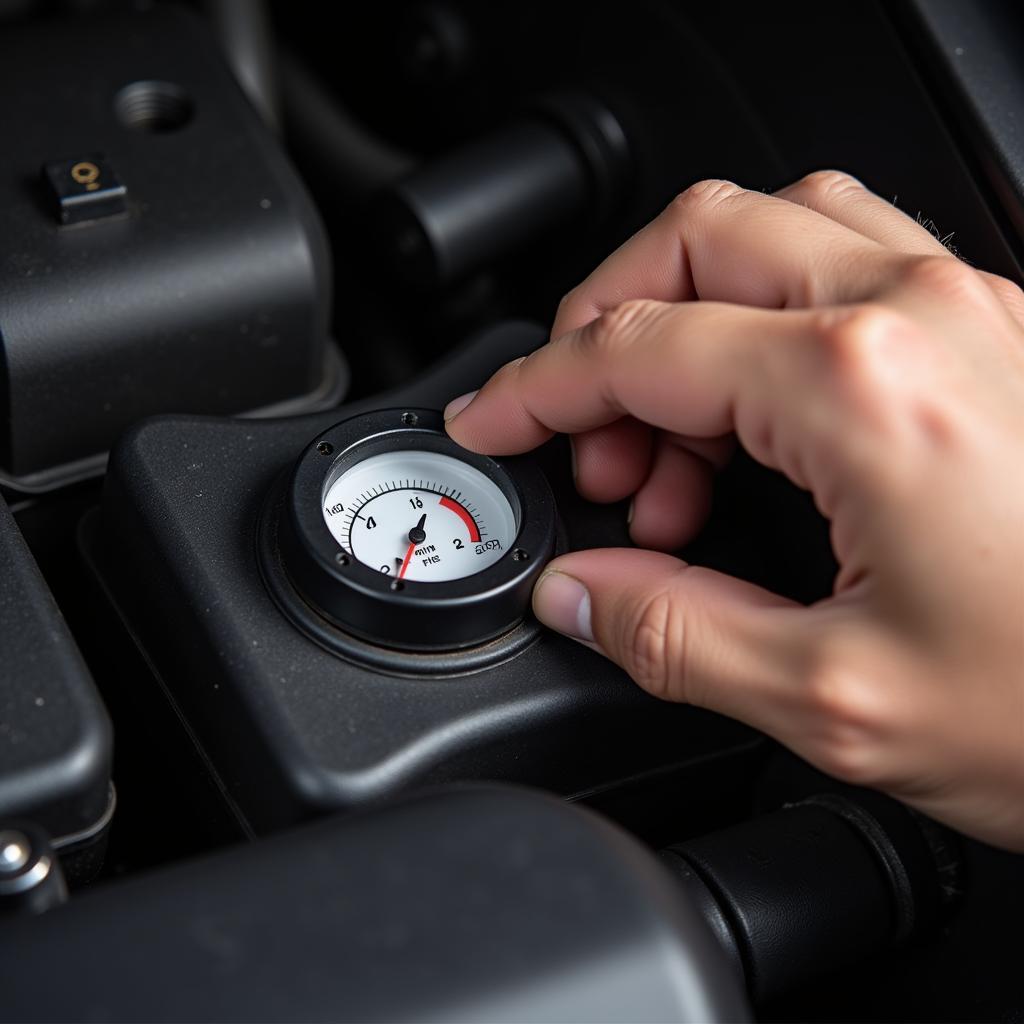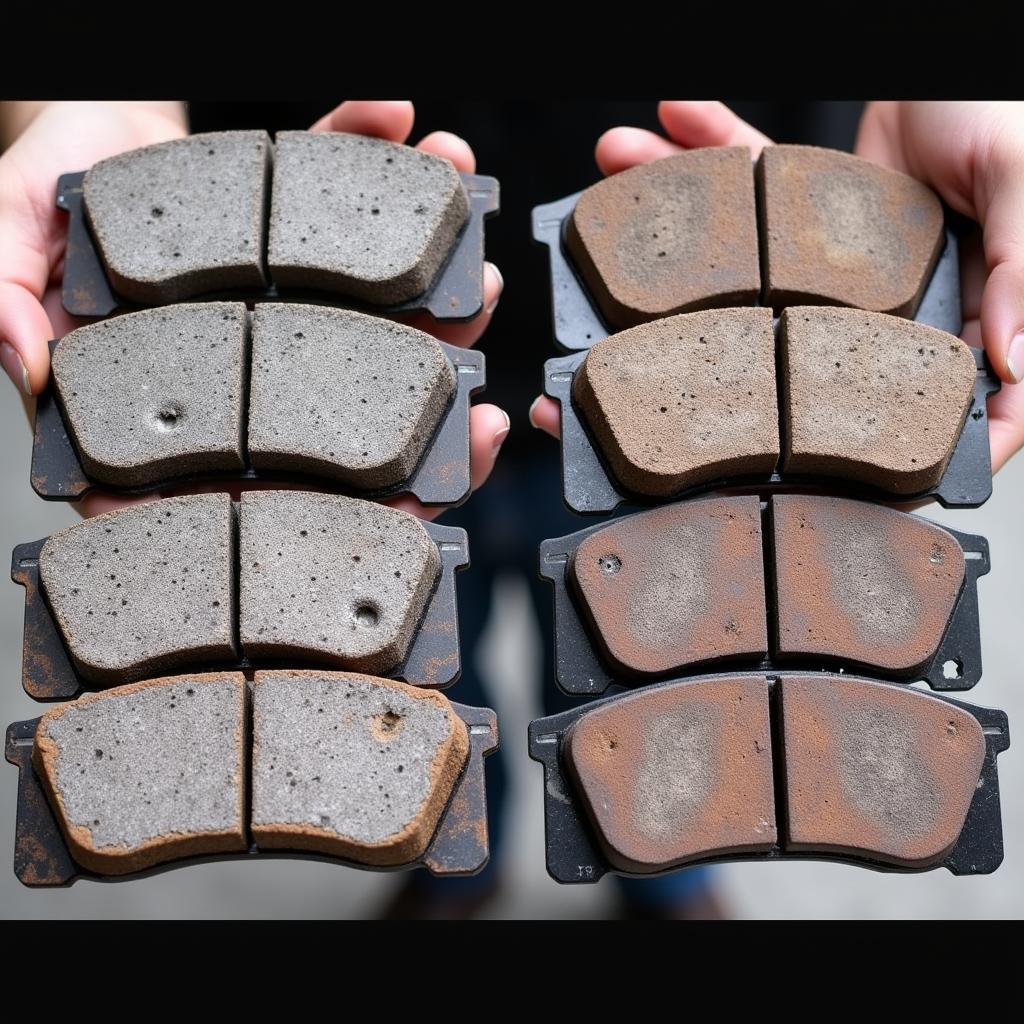A brake warning light illuminating on your dashboard is a clear sign that something is amiss with your vehicle’s braking system. While it might cause immediate concern, it’s crucial to understand that the warning light itself doesn’t pinpoint a specific problem. Instead, it serves as a general alert, prompting you to investigate the issue further. This article delves into the common causes behind a brake warning light, guides you on how to diagnose the problem, and discusses potential solutions to get you back on the road safely.
Understanding Your Vehicle’s Brake Warning System
Your vehicle’s braking system is designed with multiple fail-safes to ensure your safety. The warning light on your dashboard is one of those crucial safety features. When activated, it usually signifies one or more of the following issues:
-
Low Brake Fluid: Brake fluid is the lifeblood of your braking system, responsible for transmitting the force you apply to the brake pedal to the wheels, ultimately stopping the car. A leak in the system can lead to dangerously low brake fluid levels, triggering the warning light.
-
Engaged Parking Brake: It might seem obvious, but a common and easily resolvable cause is an inadvertently left-on parking brake. Even slight engagement can trigger the warning light.
-
Worn Brake Pads: Brake pads play a vital role in stopping your vehicle. Over time, they wear down with use. Most cars are equipped with sensors that turn on the warning light when the brake pads reach a certain level of wear, indicating the need for replacement.
-
ABS Issue: Modern cars feature an Anti-lock Braking System (ABS) that prevents wheel lockup during hard braking, improving control and stability. A malfunction within this system, often related to sensors or the ABS module itself, can illuminate the brake warning light.
Diagnosing the Problem: A Step-by-Step Guide
 Checking the Brake Fluid Reservoir
Checking the Brake Fluid Reservoir
-
Check Your Parking Brake: Before panicking, ensure the parking brake is fully disengaged. It’s a simple step that often solves the issue.
-
Inspect the Brake Fluid Level: Locate your car’s brake fluid reservoir (refer to your owner’s manual if unsure). The reservoir usually has a “min” and “max” marking. If the fluid level is below the “min” mark, your brake warning light is likely activated due to low brake fluid.
-
Examine Your Brake Pads: While not as easy to inspect as the brake fluid, you can visually assess the brake pads through the spaces between the wheel spokes. If you see very little brake pad material remaining, it’s time for a replacement.
-
Consult a Mechanic for ABS Issues: Diagnosing and repairing ABS problems often requires specialized tools and expertise. If you suspect an issue with your ABS, it’s best to consult a qualified mechanic.
Addressing the Brake Warning Light: Finding the Right Solution
- Adding Brake Fluid: If you find the brake fluid level low, you can temporarily address the issue by adding the correct type of brake fluid (as recommended in your owner’s manual) to the reservoir, bringing it up to the “max” line. However, it’s crucial to remember that this is a temporary fix.
“Adding brake fluid without addressing the root cause of the leak is like putting a band-aid on a deep cut,” warns John Smith, a veteran automotive engineer with over 20 years of experience. “It might seem like a quick fix, but it can lead to more serious problems down the line.”
- Professional Inspection and Repair: For anything beyond a simple top-up of brake fluid, it’s strongly recommended to seek professional help. Whether it’s a leak in the brake lines, worn brake pads, or a malfunctioning ABS system, attempting DIY repairs on such critical safety components can be dangerous and lead to costlier repairs in the long run.
Taking Proactive Measures: Ensuring Optimal Brake System Health
- Regular Maintenance: Just like any other part of your vehicle, regular maintenance is key to a healthy and efficient brake system. Schedule routine brake inspections and fluid flushes as recommended by your car manufacturer.
“Prevention is always better than cure,” emphasizes Jane Doe, a certified automotive technician and brake specialist. “Regular maintenance not only ensures your safety but also helps you avoid costly repairs in the future.”
-
Quality Parts: When it comes to your brakes, never compromise on quality. Always opt for genuine or reputable aftermarket parts that meet or exceed the manufacturer’s specifications.
-
Listen to Your Car: Pay attention to any unusual noises, vibrations, or changes in brake pedal feel. These could be early warning signs of a developing brake issue.
Conclusion
A brake warning light on your dashboard is a serious alert that should never be ignored. By understanding the potential causes, following a systematic diagnostic approach, and seeking professional help when necessary, you can ensure your safety and maintain a reliable braking system for miles to come. Remember, when it comes to brakes, a proactive approach is always the best course of action.
Frequently Asked Questions (FAQs)
-
Can I drive my car with the brake warning light on?
While it’s technically possible to drive a short distance with the brake warning light on, it’s highly discouraged. It indicates a potential problem with your braking system, putting your safety at risk. -
How often should I check my brake fluid level?
It’s a good practice to visually inspect your brake fluid level at least once a month. However, always refer to your owner’s manual for specific recommendations from your car manufacturer. -
How long do brake pads last?
Brake pad lifespan varies depending on driving habits and conditions. However, they typically last between 30,000 to 70,000 miles. -
How much does it cost to replace brake pads?
The cost of brake pad replacement varies depending on your car model and the type of brake pads you choose. On average, expect to pay between $150 to $300 per axle. -
How do I know if my ABS is malfunctioning?
Common signs of a malfunctioning ABS include an illuminated ABS warning light, unusual noises during braking, and a pulsating or spongy brake pedal.
Please note: This information is for general knowledge purposes only and should not be considered a substitute for professional advice. Always consult a qualified mechanic for any brake-related concerns or repairs.


